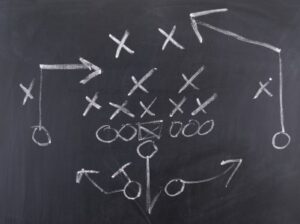

Profits in the Trenches

In the business world, there is a general belief that corporate functions can be divided into categories with a distinctively different impacts on organizational success: cost centers and profit centers. The original concept of Responsibility Centers originates back to the 1940’s on the basic premise that by simplifying functions within the context of their relationship with profit, management can drive accountability and easily manage, evaluate, and compensate its business units.
Theoretically, the Responsibility Center paradigm takes into account that cost centers are vital to organizational success by providing stability but have limited impact on revenue. Profit centers on the other hand are often associated with growth and have typically had compensation structures reflective of their perceived impact. Unfortunately, such myopic views create biases around departmental contribution and value.
In reality, value to a company may be derived in many ways other than revenue growth: efficiency, productivity, leadership, innovation… Long and short term results have different impact on overall company value. While even Peter Drucker, the man who coined the term Profit Center in 1945, later went on to say that this term was “one of the biggest mistakes [he] ever made”, this misconceived and myopic perspective on functional impact on overall success continues to perpetuate itself in 21st century corporate lingo.
Touchdowns and Profits
A good illustration of the impact of different roles and their impact on overall value can be found in sports. In American football, there are twenty-four distinct positions and within those twenty-four positions, the offensive roles can be broken down into two groups: the offensive line, who protect the quarterback, and the six back-positions, skilled positions primarily responsible for handling and moving the football forward to reach the end-zone. Going through the list of household player names, Hall of Fame players such as Joe Montana, Tom Brady, Peyton Manning, Barry Sanders, Jerry Rice, easily come to mind. These are well known names because their stats are often quoted in record books around points scored, yards passed gained or catches made. Even famous defensive playmakers are often recognizable to even the casual fan (eg. Ray Lewis, Deion Sanders, Lawrence Taylor).

On the other hand, very few names come to mind when thinking of offensive linemen. In an entertainment industry, those positions that regularly catch, carry or touch the ball are most likely to receive the most fanfare. After all, the camera is always on whoever held the ball last. Scoring touchdowns is fun after all. It is for this very reason that wide receivers often get so much praise and become the masters of touch down celebrations. Pundits have even evaluated the value of blocking tight-ends vs scoring tight-ends and come to a similar conclusion on their perceived value.
In sports, it is easy for couch GMs to give their attention to those that produce easily digestible stats. For offensive linemen however, there is no notable statistic to easily quantify their value, other than perhaps quarterback sacks allowed. Despite this, they play a crucial, albeit indirect role, in passing yards, touchdowns, running yards. Why? Because offensive linemen are responsible for protecting the quarterback, identifying defensive coverage schemes and blitzes, giving others time to let their scheme unfold, and opening holes within the defensive line to allow drawn up plays to develop.
But for a position that rarely ever touches the ball, character and humility seem to be highly sought-after characteristics of NFL offensive linemen. As well, the NFL as a marketplace seems to agree, the most valuable players on the offensive side of the ball, after the quarterback, is the offensive lineman. When the average salary of the starting quarterback in the NFL is $30MM and average cap hit accounts for 20% of the overall team budget, it is no surprise that one of the next most important players, are the ones responsible for protecting that quarterback. According to sportrac, the position with the second highest average salary is the Offensive Tackle. Offensive Tackles are often the largest (and slowest) athletes on the football field. Yet they are valued for their discipline, comprehension of offensive tactics, communication and to provide intelligence to the quarterback. In fact, quarterbacks such as Tom Brady are famous for recognizing the value of their offensive linemen and consistently praising their contributions to their individual own measured success.
A Modern Game of Profit and Loss

Whereas NFL GMs will value intelligent, mobile and cohesive offensive linemen to anchor their team’s primary ball handling decision-maker, highly skilled executives will value strong, skilled, professional support functions to provide them with intelligence, judgment and confidence. The idea of measuring revenue as a driver of value, ignoring the cost of that revenue, is short-sighted and foolish. While the idea breaking down allocation of value to singular and quantifiable dimensions may be tempting, they are fraught with risks to the overall health of the organizational culture and true profit.
Behavior and motivation may be impacted for ‘cost center’ employees who may internalize their perceived limited upside on company value. Similarly, profit center employees may push growth at the expense of real profit, creating unnecessary conflict. Ironically, it would be the ‘cost centers’ such as Finance which are in the best position to measure and highlight true profitability of sales. A proper financial analysis can highlight the difference between revenue, break-even revenue and profitable return on assets. After all, what is the value of a quarterback who throws two pick-sixes for each touchdown he makes?
Steve Tsao
Connect with us
We do no-obligation consultations



